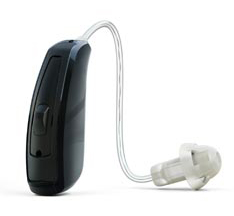Know your best style of hearing aids before purchasing
There are different types of hearing aids, and modern assistants have different prices. In this article we will describe all your basic styles. Thus, if you are talking to a salesperson or a representative of a hearing company, you can choose the most appropriate style.
Until recently, there were four basic types of hearing aids. It's five now. The main styles are different, but they are easy to classify as:
- Hearing prosthesis behind the ear (BTE)
- Fill in the hearing aid
- Hearing aid half shell
- Hearing Aids
- Fully directed
Now we characterize them individually, starting with the cheapest and the biggest, the smallest and the most expensive.
Prosthetic hearing behind the ear (also called postural)
These instruments were the first to be developed by original hearing aids, which were battery powered and required a large battery and amplifier in their pockets. They are the biggest help available on the market, and they have the advantage that they are light and hard of hearing.
Technological development is aimed at reducing clarity and quantity in recent years.
AIDS BTE is the most common form of free or subsidized care provided by healthcare facilities worldwide.
Hearing aids for the whole body or Conch a
These tools basically fill the ears and do not require straps behind the ears. This makes them less obvious and less important in sports.
This type of support is suitable for most cases of hearing loss, although due to the small size of the hearing aid, the device provides a lower volume than the back ear.
It is the largest and most economical hearing aid in the ears, although it is less bulky and comfortable than most hearing aids in the back of the head.
However, instant ear support makes the instruments less noticeable and aesthetically pleasing. They are more popular with young users and more interested in their image.
Hearing Aids
This type can fill only part of the ear and use a smaller battery for energy than behind the ear. This is less than a hearing aid for the entire ear and is more visually acceptable. Under normal conditions of use, only small patches of skin are visible in the user's ears.
Many people choose this type of hearing aid because it has a good style, there is no compromise in design, and the performance and appearance are great. However, size reduction is not a problem, except that this style is usually not suitable for severe hearing loss.
Duct or mini hearing aids
Duct hearing aids are based on placement in the ear canal and always remain in this position. The inevitable sacrifice is that in order to reduce the size it is necessary to reduce small volumes (output power), and some large hearing aids may be lost. However, many people will welcome this compromise so that this assistance is very low. Above the ear canal there is a small light button that an observer can see.
For those who value their appearance, this type of support is the perfect compromise between cost and functionality, which is ideal for patients with mild or moderate hearing loss.
Fully Channel or Hearing Aid CIC
We are at the last stage of almost technological development. We have achieved the smallest, most expensive and most modern style of hearing aids. We know that CIC-based style is suitable for a wide range of patients with mild to moderate hearing loss.
Nothing indicates that you are using a hearing aid. It is also the most prominent type among all existing models and a popular type of hearing aids.
Many also say that the smaller the hearing aid, the better for a sporting lifestyle. Finally, you made your choice. We hope you read this article now and get better results than I read this article.
Samir Piplani continues to give tips and information about buying Hearing Aids in Rajasthan.




Comments
Post a Comment